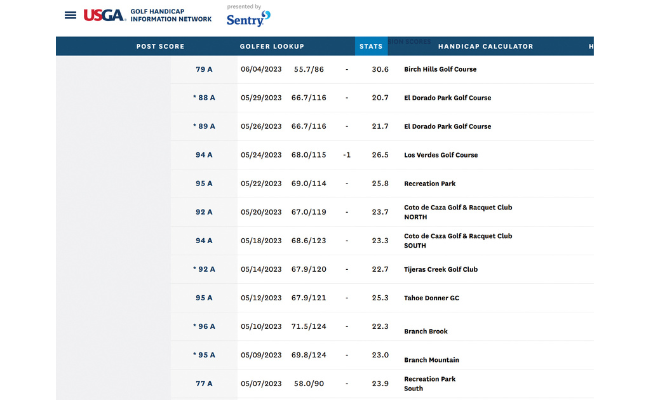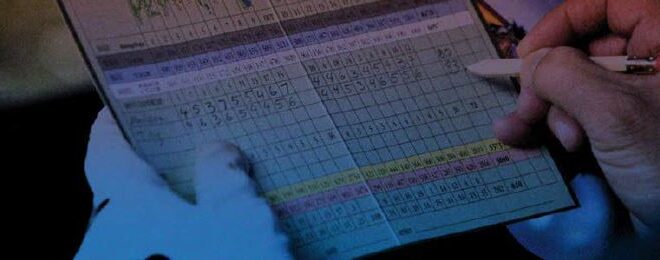Great Expectations

What Are You Expecting?
As of 2024, the expected score procedure is used to calculate an 18-hole Score Differential™ for any eligible nine-hole or 10- to 17-hole round. An expected score can be thought of as a neutral value, meaning that a good nine-hole round played will result in a good 18-hole Score Differential. An average nine-hole round will result in an average 18-hole Score Differential, etc.
While the formula for expected score is proprietary to the World Handicap System™, using the neutral guideline above, analysis shows that an expected score is close to an “average” nine-hole Score Differential for a player with a certain Handicap Index®. It’s normal to score between 2.0 and 5.0 strokes above handicap for 18 holes depending on Handicap Index, so average would be close to one-half of that range for nine holes.
A calculated Score Differential for the nine holes played is combined with the expected score value for a player with a given Handicap Index to produce an 18-hole Score Differential. This same philosophy applies for any round where nine to 17 holes have been completed — neutral data for holes not played. The expected score formula is not related to a specific course and does not consider how the player did on the holes played. It is simply associated with the player’s Handicap Index.
The intent is not to give an advantage or to punish someone who posts a nine-hole score (or any score of less than 18 holes) but to add a value that is normal for a player based on their Handicap Index.
A small number of players who have a good nine-hole score (relative to their Handicap Index) have expressed concern that the 18-hole Score Differential is higher than if the score from the nine holes played were doubled. While playing to handicap is an appropriate goal, given that a player is only supposed to do that some 20 percent of the time, the previously referenced neutral concept is going to provide more realistic results versus assuming performance on the “first” nine will be maintained for the “second” nine. With the latter approach, a good nine-hole score would result in an artificially low Score Differential and Handicap Index.
Prior to 2024, when nine holes were played, that score was either combined with an existing nine-hole score or waited for the next nine-hole score to be posted. The order of entry/sequence of nine-hole rounds was impactful on the result and sometimes produced noticeable variations for 18-hole Score Differentials.
In other situations, uncombined nine-hole scores waited for lengthy periods of time and the player’s Handicap Index may have changed significantly before being combined with another nine-hole score. The expected score procedure minimizes the volatility previously seen and allows for nine-hole rounds to count toward the Handicap Index calculation quickly. ▪
For more Handicap Hints, visit scga.org/whs-hub











